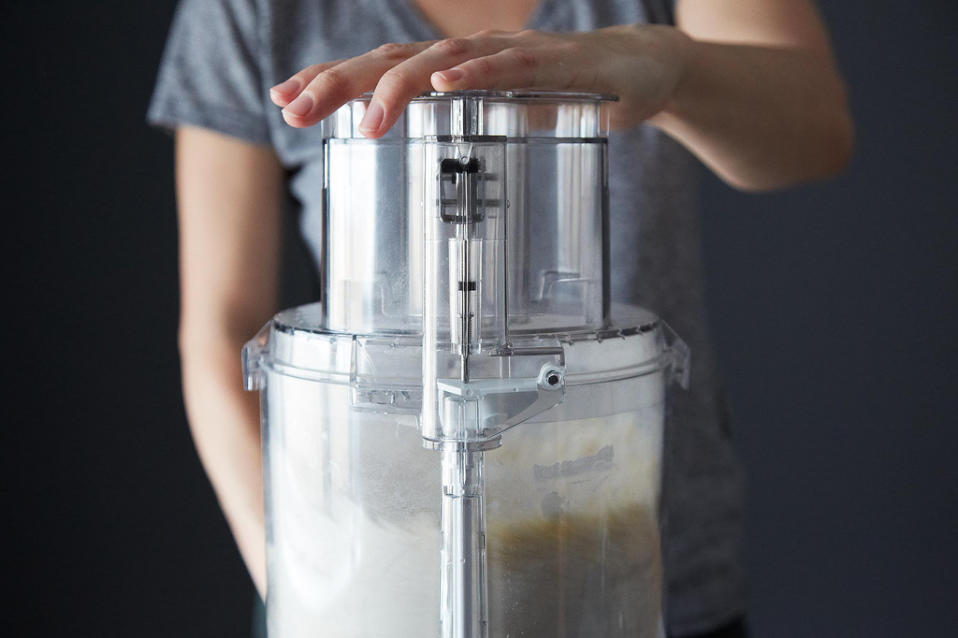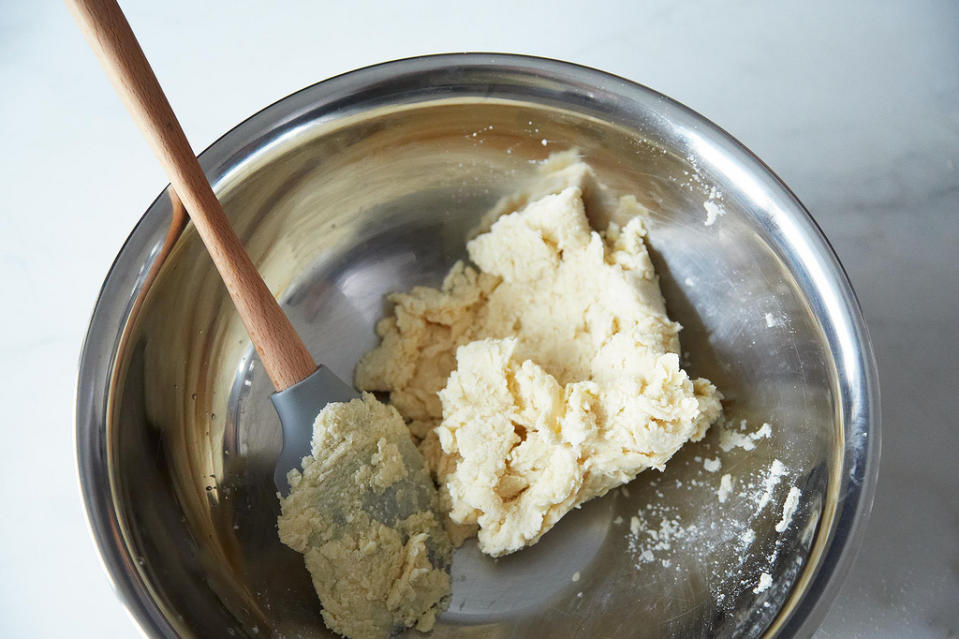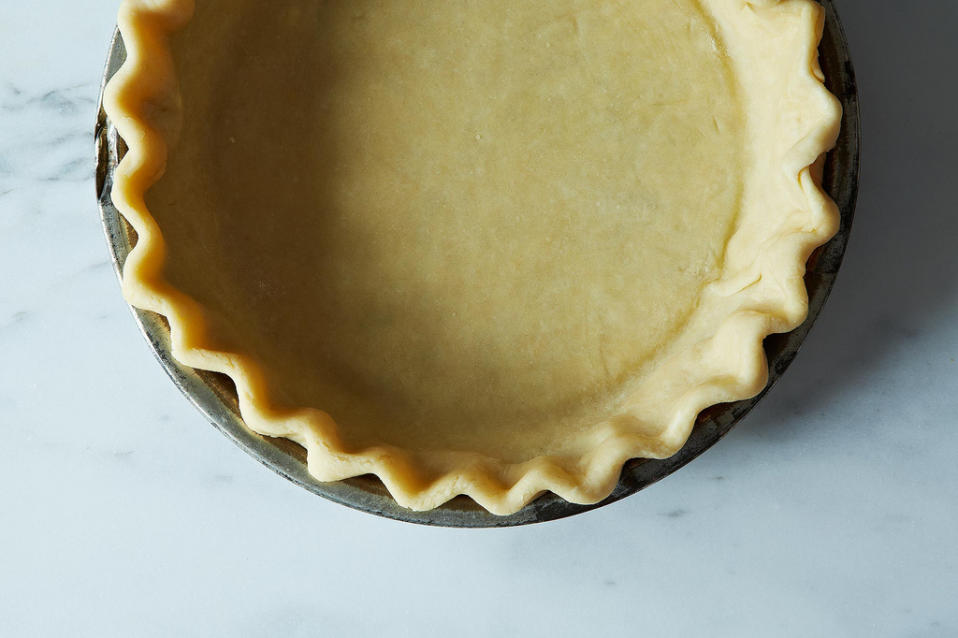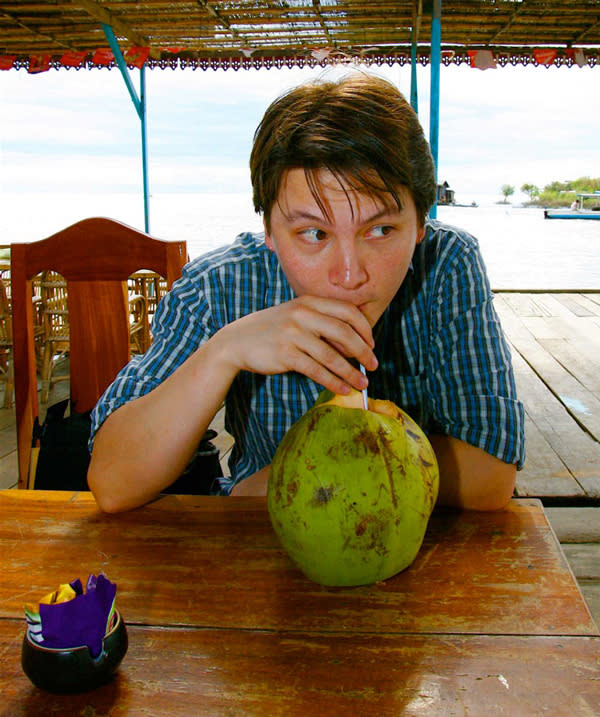Genius, Foolproof Pie Crust
Every week on Food52.com, Senior Editor Kristen Miglore digs up Genius Recipes -- the ones that make us rethink cooking myths, get us talking, and change the way we cook.
Today: The secret pie crust ingredient (and technique) that changed what we thought we knew about pie.
We all get in pie ruts. Well, crust ruts.
While what goes on inside is an ever-changing rainbow of fruit and whip and spice, the flaky buttered shell stays stubbornly, almost superstitiously unchanged. Dough can be such a fickle animal, and pies such emotional commitments that once we find a crust that doesn't fail us, we cling.
>>RELATED: 3 New Ways to Top a Pie (That Aren't a Lattice.)
So it took an obsessive recipe developer like J Kenji Lopez-Alt, and a place like America's Test Kitchen to upend everything we think we want in a pie. This is not just about a little more butter, or some novel rolling method.
Instead, under contract for Cook's Illustrated, López-Alt dissected the method we know -- dismembered it really -- to fundamentally understand what makes it work. You probably already know what's coming: back in 2007, he went and put vodka in pie crust. And it worked.
He didn't come upon it lightly: López-Alt says there were over 130 individual tests to arrive at the vodka magic trick. But once he got there, it all made perfect sense.

The trouble had always been this: there is only so tender a crust can be with the known available ingredients -- fat, flour, water. Water is what allows a dough to bind together enough to be malleable and rollable; it also helps gluten -- the gremlin that makes crusts toughen -- form. And proliferate.
So he needed a stand-in for water, one that would offer moisture but not encourage gluten, and would leave no unsavory traces behind. The answer, of course, was vodka, the most forgettable of spirits. Vodka is 40% alcohol, which evaporates in a hot oven -- it sticks around long enough to keep the dough together, then politely disappears when it's no longer needed.



You can use this trick in any flaky pie crust recipe -- just swap half the liquid for hard liquor. You can even use booze with real flavor, if you like -- like rye in apple pie crust, or rum in coconut cream.

And once you understand vodka's properties in cooking, it can do even more. "Try replacing some of the water in a tempura-style batter or some of the beer in a beer batter with straight up vodka," López-Alt told me." Just like with the pie crust, you'll find that your batter comes out lighter and crisper because of alcohol's high volatility and gluten-inhibiting abilities."

But, as he's learned since, the vodka isn't even the most genius part of the technique he developed: it's the blending. Instead of leaving pea-sized chunks of butter like we're taught, López-Alt blends it completely with part of the flour, then cuts up that paste with a bit more flour.
"That was the one that I think should really have put it on the map," he said. "Because it challenged some basic assumptions about how pie crusts look on a microscopic level." We don't need pockets of butter like we always thought; pockets of flour-butter paste are just as good.
Most importantly, this means that the dough is more predictably tender and flaky (since it's based on a more homogenous flour-butter paste rather than jagged bits of cold butter) and easier to roll out too. Foolproof, for once, isn't an overstatement.
Cook's Illustrated's Foolproof Pie Crust
Makes one 9-inch pie crust
1 1/4 cup unbleached all-purpose flour
1/2 teaspoon table salt
1 tablespoon sugar
6 tablespoons cold unsalted butter (3/4 stick), cut into 1/4-inch slices
1/4 cup chilled solid vegetable shortening, cut into 2 pieces
2 tablespoons vodka, cold
2 tablespoons cold water
1. Process 3/4 cups flour, salt, and sugar together in food processor until combined, about 2 one-second pulses. Add butter and shortening and process until homogenous dough just starts to collect in uneven clumps, about 10 seconds (dough will resemble cottage cheese curds with some very small pieces of butter remaining, but there should be no uncoated flour). Scrape down sides and bottom of bowl with rubber spatula and redistribute dough evenly around processor blade. Add remaining 1/2 cup flour and pulse until mixture is evenly distributed around bowl and mass of dough has been broken up, 4 to 6 quick pulses. Empty mixture into medium bowl.
2. Sprinkle vodka and water over mixture. With rubber spatula, use folding motion to mix, pressing down on dough until dough is slightly tacky and sticks together. Flatten dough into 4-inch disk. Wrap in plastic wrap and refrigerate at least 45 minutes or up to 2 days.
3. Adjust oven rack to lowest position, place rimmed baking sheet on oven rack, and heat oven to 425 degrees. Remove dough from refrigerator and roll out on generously floured (up to 1/4 cup) work surface to 12-inch circle about 1/8 inch thick. Roll dough loosely around rolling pin and unroll into pie plate, leaving at least 1-inch overhang on each side. Working around circumference, ease dough into plate by gently lifting edge of dough with one hand while pressing into plate bottom with other hand. Leave overhanging dough in place; refrigerate until dough is firm, about 30 minutes.
4. Trim overhang to 1/2 inch beyond lip of pie plate. Fold overhang under itself; folded edge should be flush with edge of pie plate. Flute dough or press the tines of a fork against dough to flatten it against rim of pie plate. Refrigerate dough-lined plate until firm, about 15 minutes
5. Remove pie pan from refrigerator, line crust with foil, and fill with pie weights or pennies. Bake for 15 minutes. Remove foil and weights, rotate plate, and bake for 5 to 10 minutes additional minutes until crust is golden brown and crisp.
Save and print the full recipe on Food52.
Photos by James Ransom, except Kenji courtesy of Food Blog South
This article originally appeared on Food52.com: Cook's Illustrated's Foolproof Pie Crust



